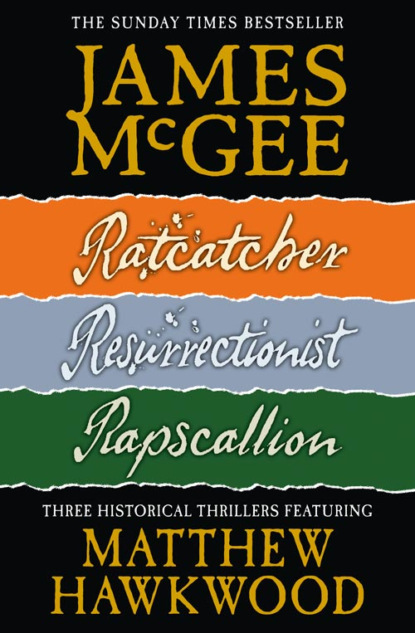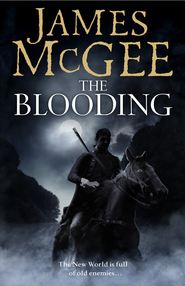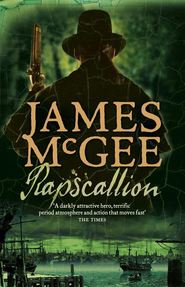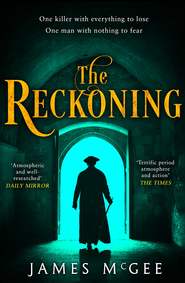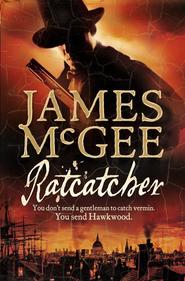По всем вопросам обращайтесь на: info@litportal.ru
(©) 2003-2025.
✖
Matthew Hawkwood Thriller Series Books 1-3: Ratcatcher, Resurrectionist, Rapscallion
Автор
Год написания книги
2019
Настройки чтения
Размер шрифта
Высота строк
Поля
Fulton had run into trouble with his French allies. A change of administration at the Ministry of Marine had brought with it a sudden reversal of enthusiasm for the American’s invention.
“Decres it was who took over. Looks as if he’s changed his tune since, though, but at the time he thought Fulton’s idea was barbaric, more suited to a pack of corsairs than the Imperial Navy. Put Fulton’s back up, as you can imagine. Fortunately, it coincided with our plan to bring him over to us. Excellent timing on our part. Mind you, he was a greedy bugger!
“Had this agreement with the Frogs. They were to pay him a bounty for every ship destroyed. He demanded a similar contract from us. Also told us if we wanted him to provide details of his submersible and his submarine bombs, it would cost us a hundred thousand pounds for the privilege. Bloody nerve!”
For a moment Hawkwood thought his ears had deceived him. A Runner’s salary was twenty-five shillings a week, plus an extra fourteen shillings for expenses; a little over one hundred pounds a year. A thousand times that was an unimaginable sum. What was it about the American’s invention that made it worth a king’s ransom?
“Anyway,” Blomefield said, “we refused to agree any sort of price until his inventions had been examined and tested in England.”
“In other words,” Congreve put in, “far better to have him inside the tent, pissing out.”
The First Sea Lord and the admiral smiled weakly. James Read’s expression remained neutral, though Hawkwood thought he detected a faint tremor at the corner of the magistrate’s mouth.
A further inducement had been employed. Fulton had been experimenting with steam as a means of propulsion. While in Paris, he’d written to the Birmingham firm, Boulton & Watt, asking them to build an engine for use in a steamboat in the United States. The British government, not surprisingly, had refused an export permit. However, should Mr Fulton choose to move to England … well, anything was possible.
“Have to confess, I was rather taken with the fellow,” Congreve smiled. “I was on the commission, you see.”
Fulton had travelled to England in April 1804. No sooner had he set foot ashore than Prime Minister Pitt had appointed a special commission to examine the American’s inventions. Other appointees had included the distinguished scientist Henry Cavendish, Admiral Sir Hope Popham, and Sir Joseph Banks, President of the Royal Society. The initial findings, however, had not been well received by Fulton, as the colonel revealed.
“Oh, the design was feasible enough, no doubt about that, but totally impractical in combat.” As he spoke, the colonel’s hand strayed to the sketches on the table. “Or so we thought at the time.” The colonel gave a wry smile. “The commission was more interested in his submarine bomb – his torpedo, as he called it.”
“His what?” Hawkwood asked.
“Torpedo. Named after a breed of fish. The beast uses an electrical discharge to stun its enemies. Not sure how exactly, I’m no expert in aquatic fauna.”
Despite the explanation, Hawkwood felt none the wiser. The colonel might as well have been conversing in Hindustani.
Prime Minister Pitt, however, had been sufficiently impressed to put his signature to a contract agreeing to pay Fulton £40,000 for demonstrating the principles of his submersible and the surrender of all rights to his invention. A very generous amount, even without the additional supplement of £200 a month salary, a credit limit of £7,000 and a further £40,000 for the first French ship destroyed. Admiralty dockyards and arsenals were ordered to furnish materials and equipment as required.
“We tried out his torpedoes at Boulogne later that year,” Congreve said. “Without much success, frankly, but we saw the potential right away. And just the rumour was enough to put the fear of God into the Frogs. There was a lot of refining to do, more testing and so forth. Took another year before we were ready to try again. Remember the Dorothea, Blomefield?”
“By God, do I!”
The Dorothea, the colonel explained, had been an ancient Danish brig anchored in Walmer Roads, off the Dover coast. Fulton’s submarine bombs had reduced the ship to matchwood.
“That was the result we needed. We were all set. We planned to use Fulton’s torpedoes and my rockets against the French fleet at Cadiz. Would have been the grandest bloody firework display in Europe!” Colonel Congreve shook his head in regret.
“Only our one-eyed admiral got there first,” Blomefield said.
They meant Trafalgar.
Blomefield sighed. “The brave bugger only went and annihilated the Frog fleet. No need for Fulton’s newfangled bombs after that. Nothing left for us to blow up!”
“Didn’t stop him demanding his bloody fee, though!” the First Sea Lord grumbled.
As a final settlement, Fulton had asked for £10,000 for switching allegiance, £100,000 for demonstrating that warships could be destroyed by his invention, a £2,400 annual pension for life, and £60,000 for agreeing not to use his inventions against the British fleet.
The Board of Arbitration consulted and decided Fulton hadn’t done enough to warrant the extortionate payments he was requesting. The Board had eventually awarded him £14,000 plus salary and incidentals already earned, which had amounted to the far from princely sum of £1,640.
“So the bugger dismantled all his equipment and packed off home,” Blomefield said. “Lock, stock, and bloody barrel.”
“Bearing a very aggressive bee in his bonnet,” the colonel added.
“So,” Hawkwood said, “the man has a grudge.”
“A bloody big one, would be my guess.” Congreve sucked at his lower lip reflectively.
“And you think he’s back in France?”
Congreve shook his head. “No, not Fulton. The fellow’s not in the best of health. An emissary, sent in his place.”
“His name is William Lee,” James Read said. “He’s an old friend of Fulton, been working with him for the past five years. Our contacts informed us that he arrived in France at the beginning of the year.”
“Why would the French still be interested after the last time?” Hawkwood asked, mystified. “Why have they changed their minds?”
“Because Bonaparte’s losing the war.” The voice was the admiral’s. It was the first time he had entered the conversation. “Our little corporal’s on the run!”
Congreve nodded. “And it would give Fulton a chance to get back at us. It’s no secret that relations between ourselves and the Americans have become somewhat strained.” The colonel pursed his lips. “There’ve been several incidents between our ships at sea. The navy’s been stopping American ships to search for deserters. The Americans have accused us of piracy. It would come as no surprise to me if the situation worsened.”
“You mean war?” Hawkwood said, disbelievingly.
At this, the First Sea Lord gave a meaningful cough. It sounded suspiciously like a veiled warning. Congreve shrugged. “Who knows?”
While Hawkwood was contemplating the noncommittal answer, the colonel looked towards Dalryde. “Would you care to continue, Admiral?”
Dalryde cleared his throat. “We thought it might pay us to keep an eye on Lee. We suspected Fulton had made a number of improvements. He wrote a book last year: Torpedo War and Submarine Explosions. We managed to secure a copy. The contents were disturbing enough for us to dispatch an agent to France to investigate. Resourceful fellow, name of Ramillies, one of our very best men. We’d used him on several previous occasions.”
The admiral looked back at the colonel, as if suggesting he might like to take up the story. The colonel duly obliged.
“Lieutenant Ramillies unearthed evidence suggesting that Lee had definitely constructed a more advanced submersible. Through contacts in the Bourbon resistance he was able to secure employment in the dockyard where the submersible was being built. From there, at great risk to himself, he managed to gain entry into Lee’s workshop and made copies of the submersible’s plans.” The colonel indicated the drawings. “Not exactly draughtsman’s quality, I’ll grant you, but more than sufficient for our needs. A short time later, he learned that trials of the weapon were due to be conducted on the Seine and infiltrated the area to observe proceedings.”
“But he was discovered,” the admiral broke in, shifting in his chair. “He managed to escape by the skin of his teeth, with the drawings of the submersible, but he was severely wounded. He was sheltered by Royalist sympathizers until he was well enough to travel. They then arranged passage for him back to England. He was landed at Dover and was on his way to London when his coach was held up on the Kent Road. He was murdered and his plans of the submersible were stolen …” The admiral paused. “The rest you know.”
The colonel picked up one of the sketches and stared at it intently. “We believe the submersible boat is now operational and ready to be used against our convoys. We also believe that Bonaparte has contracted Lee to attack a specific target. What we do not know is the nature of that target.”
Hawkwood was still having trouble with the logistics. “But how does the weapon work? How does it deliver the bombs?”
“What?” Congreve perked up. “The bombs, you say? Ah yes, of course, well, it’s dashed simple, really.” The colonel smiled suddenly. “But then they say the best inventions always are.”
Hawkwood wondered if the colonel was alluding to his own experimental rockets. Recalling their erratic behaviour, they had looked anything but simple.
The colonel picked up the pencil once more. “Now, where are we?” The colonel reached for the sketch of the submersible and pointed. “You see the dome? There’s a barbed spike attached to a rod that sticks out from the top of it. Fulton called it the horn. When the submersible is positioned beneath the target vessel, the bottom of the rod is struck from inside the dome, driving the spike up into the target’s hull. You follow?”
Hawkwood nodded.
“When the spike is secure, the submersible detaches itself, leaving the spike embedded in the target’s hull. At the bow of the submersible there’s a windlass controlled from inside the craft. A line runs aft, from the windlass, through a ring in the spike to the submersible’s stern …” the colonel moved the pencil point “… where it’s attached to a copper barrel containing gunpowder and a primer. As the submersible moves off, the line on the windlass is released. When all the line is played out, the forward motion of the submersible is transferred to the barrel by means of the line passing through the hole in the spike. This detaches the barrel, drawing it against the side of the target. The contact causes the primer to spark and ignite the powder.” The colonel grinned. “The rest I’ll leave to your imagination.”
Ingenious, Hawkwood thought, didn’t begin to describe it. He peered past the pencil point, still hovering above the sketch. “How big would the charge have to be?”





